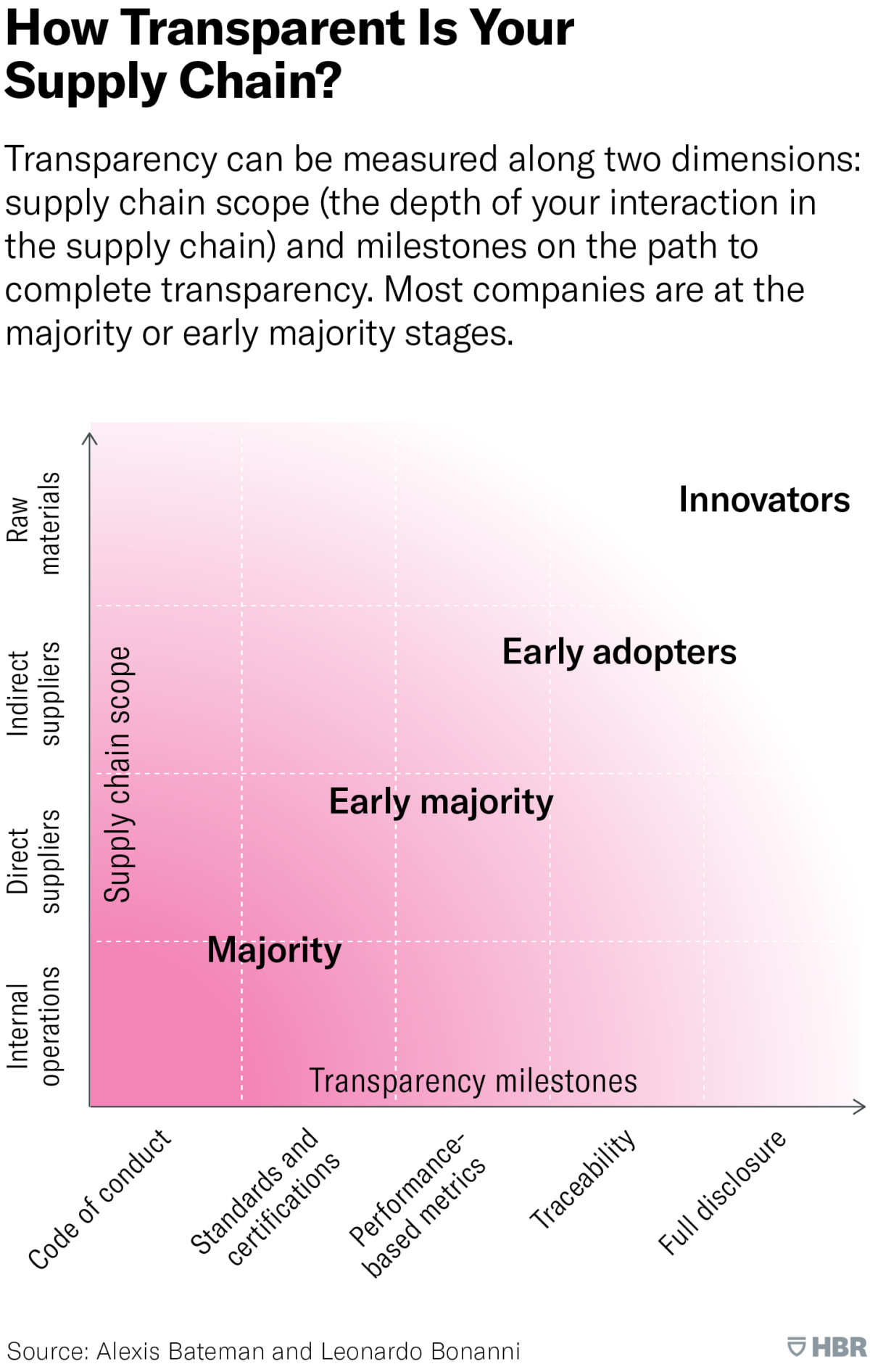How Transparent Should You Be With Your Supply Chain Network?
A decade or two ago, the concept of supply chain transparency was virtually unheard of. However, in recent years, the spotlight has increasingly shifted towards supply chains, elevating transparency to a key area of focus and importance.
In this blog post, we delve into the reasons for increasing openness within your supply chain, particularly concerning your suppliers. We’ll explore the impact on major fashion brands and how the level of transparency can vary.

According to Harvard Business Review, one reason the process has become increasingly important is that more consumers are demanding it. For instance, researchers at the MIT Sloan School of Management found that consumers may be willing to pay 2% to 10% more for products from companies that provide greater supply chain transparency.
What level global leaders should aim for?
The level of transparency a brand with a global footprint should maintain in its supply chain network depends on various factors, including industry standards, regulatory requirements, stakeholder expectations, and ethical considerations. Ideally, a high degree of transparency is recommended for several reasons:
- Regulatory Compliance: In many regions, there are increasing legal requirements for supply chain transparency, especially regarding labor practices and environmental impact.
- Ethical Responsibility: Transparency is crucial in ensuring ethical practices throughout the supply chain. This includes ensuring that workers are treated fairly, that there is no child or forced labor, and that suppliers adhere to environmental and social standards.
- Consumer Trust and Brand Reputation: Modern consumers are increasingly concerned about the ethics of their purchases. Transparency in supply chains can enhance consumer trust and loyalty, as customers are more likely to support brands that are open about their manufacturing processes and source responsibly.
- Risk Management: Knowing the details of the supply chain helps in identifying and managing risks related to supplier reliability, geopolitical factors, environmental hazards, and labor issues.
- Investor Confidence: Transparency in supply chain practices can attract and retain investors who are increasingly focusing on environmental, social, and governance (ESG) criteria. Clear information about supply chain practices can be a key factor in investment decisions.
Hot topics today: Shein, Zara and Patagonia
The issue of supply chain transparency is gaining attention globally in the retail sector, highlighted by the scrutiny of Chinese fashion group Shein by U.S. lawmakers and the ongoing discussions in the European Union about mandating disclosure to prevent environmental harm and child labor. Most major fashion brands and retailers have started publishing comprehensive lists of their suppliers, but Inditex only releases the number of suppliers in certain core countries without specific factory details.
Inditex, the parent company of Zara, is facing increasing pressure to disclose its full supply chain details, a practice already adopted by many major clothing retailers. This demand for transparency is driven by investors, who seek to evaluate supply chain risks more effectively. In contrast to its competitors like H&M and Primark, Inditex has not published detailed information about the factories from which it sources its products. This lack of transparency is of particular concern given the growing focus on ethical issues in supply chains, such as the avoidance of forced labor and ensuring fair wages for garment workers.
Patagonia, known for its commitment to sustainability, provides detailed information through its Footprint Chronicles. This platform maps a section of its supply chain, including raw materials, mills, and factories, and offers in-depth insights into the operations and staff of their vendors. VF Corporation, along with some of its brands, also reveals comprehensive supply chain data, extending to raw material suppliers.
Additionally, early adopters like Nike and UK retailer Marks & Spencer are also first-movers in this space. Nike provides mappings and insights into its manufacturing plants and individual factories, while Marks & Spencer offers an interactive map detailing its food and apparel manufacturers. These initiatives highlight a growing trend in various industries towards greater transparency and traceability in supply chains.
Pressing initiatives
Global trade union federation IndustriALL and initiatives like “Know The Chain” and Supply Chain Transparency Network emphasize the need for more comprehensive disclosures and note general challenges in traceability and reporting in industry supply chains.
Investors believe that such transparency could affect a company’s competitive position but also highlight the importance of supply chain resilience and ethical considerations in investment decisions.
Conclusion
In summary, a global business should aim for a high level of transparency in its supply chain. This not only meets regulatory and ethical standards but also benefits the brand in terms of reputation, risk management, and long-term sustainability. However, the extent and manner of transparency may vary based on industry norms, the nature of the supply chain, and the brand’s specific context.
The reinvention of supply chains has escalated to a major concern for CEOs, offering a chance to develop distinct competitive advantages and unique selling points. That shows how important of a topic is the supply chain for executives and projects the long-term effects of being transparent with your supply chain.
To effectively manage and understand supply chain risks, leading companies use software to map their supply chain networks, run scenarios, and visualize their operations. This approach enables them to identify and prioritize risks to gain a comprehensive insight and competitive advantage.
If you want to learn more, our supply chain network design implementation guide offers practical advice on how to optimize your network. Click on the image below to download the guide.






